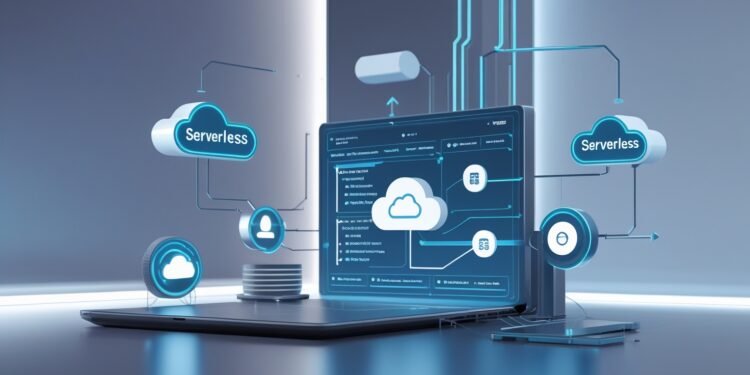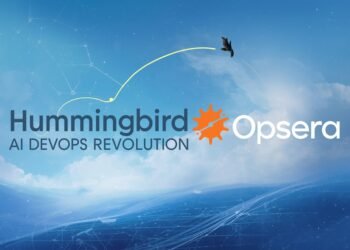By Barbara Capasso | LevelAct.com
Serverless computing isn’t a buzzword anymore—it’s a transformative cloud-native architecture that’s redefining how modern apps are built and scaled. Despite the name, serverless doesn’t mean “no servers”—it means that developers don’t have to manage them. Cloud providers handle all the infrastructure, so you can focus solely on code.
In this article, we’ll break down what serverless computing really means, explore its types, highlight the benefits, and dive into the challenges enterprises must navigate to use it effectively.
🚀 What Is Serverless Computing?
Serverless computing is a cloud execution model where the cloud provider dynamically manages the allocation and provisioning of servers. You write the code, upload it to the cloud, and it runs only when triggered—automatically scaling up or down.
Unlike traditional server-based models or even container orchestration platforms like Kubernetes, serverless allows developers to build and deploy without thinking about the underlying infrastructure.
Two popular serverless models include:
-
Function-as-a-Service (FaaS): Runs discrete code functions in response to events (e.g., AWS Lambda).
-
Backend-as-a-Service (BaaS): Offloads backend tasks like authentication, storage, or database (e.g., Firebase, AWS Amplify).
🔧 Types of Serverless Computing
1. Function-as-a-Service (FaaS)
-
Executes functions on demand in stateless compute containers.
-
Example: AWS Lambda, Azure Functions, Google Cloud Functions.
2. Backend-as-a-Service (BaaS)
-
Provides ready-to-use backend services like databases, identity, and file storage.
-
Example: Firebase, Hasura, Supabase.
3. Event-Driven Architectures
-
Triggered by events such as API calls, database updates, or IoT signals.
-
Great for real-time processing and microservices.
✅ Benefits of Serverless Computing
1. No Infrastructure Management
Forget provisioning, scaling, patching, or managing VMs—your provider does it all.
2. Auto-Scaling
Serverless platforms scale up instantly when demand spikes and scale down to zero when idle—perfect for unpredictable workloads.
3. Cost Efficiency
You pay only for what you use. No idle server time means no wasted money. This model is especially attractive for startups and agile dev teams.
4. Faster Time to Market
With less infrastructure overhead, developers focus more on code and business logic—accelerating innovation cycles.
5. Built-In High Availability
Major platforms offer high availability and fault tolerance by default—no extra configuration needed.
⚠️ Challenges of Serverless Computing
1. Cold Starts
When functions haven’t been called in a while, the platform may need to “wake up” an instance, introducing latency. This is a major concern for performance-critical applications.
2. Vendor Lock-In
Each cloud provider has its own tooling, limits, and service integrations. Migrating from one to another can be difficult once you’re deep in.
3. Observability and Debugging
Serverless environments abstract away much of the infrastructure, making logs and metrics harder to access. Tools like AWS X-Ray and Datadog help, but require setup.
4. Security Considerations
While the provider handles infrastructure security, your application code still needs strong guardrails—especially around API exposure, event injection, and data leaks.
🧠 Real-World Use Cases
-
Microservices: Each function handles a single job, perfect for loosely coupled services.
-
Data Pipelines: Serverless works well for event-driven ETL or real-time processing.
-
Chatbots & APIs: Serverless backends are ideal for APIs that don’t run 24/7.
-
IoT: Event triggers respond to device inputs instantly without overprovisioning resources.
🔄 Serverless vs Containers
| Feature | Serverless | Containers |
|---|---|---|
| Infrastructure | Fully managed | Developer managed |
| Start Time | Cold start risk | Persistent runtime |
| Cost | Pay-per-execution | Pay-for-uptime |
| Control | Limited (high abstraction) | High control |
| Use Case Fit | Event-driven, short tasks | Long-running processes |
🌐 Should You Go Serverless?
If you’re launching new services, need to respond to bursts of traffic, or want to innovate without infrastructure drag—yes, serverless is worth exploring.
However, if your application demands ultra-low latency, complex runtime dependencies, or persistent compute, containers or hybrid approaches may be better suited.
Many companies now adopt serverless for edge workloads, CI/CD automation, or non-critical APIs—freeing their dev teams to move faster with fewer DevOps headaches.
🧭 Final Thoughts
Serverless computing is a game-changer—but not a one-size-fits-all solution. It shines when used strategically, especially for modern cloud-native applications that benefit from agility, scalability, and cost control.
As the cloud evolves, expect serverless to expand beyond FaaS and BaaS into AI model execution, Edge computing, and decentralized app architectures.


















